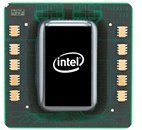
Nintendo's Switch 2 2025 Launch Plan Will Not Extend to Central American and Caribbean Markets
Throughout April, Nintendo has navigated choppy waters—not long after the much-anticipated Switch 2 hybrid console's big presentation. Potential customers in the US and Canada experienced an unfortunate delay of pre-order programs—thankfully resolved, as of late last week. The Japanese multinational gaming giant has raised Switch 2 accessory prices—in reaction to "Tariffgate"—but their core next-gen hardware will sell at originally intended levels (hopefully). Despite the company being a global force, a couple of Nintendo's regional distribution networks lack clout. Yesterday, a worrying news report emerged from Costa Rica. Teletica's article outlined a complete absence of Switch 2 and related products across Central American and Caribbean markets. According to insider sources, details were confirmed during: "a private meeting between Nintendo executives and official distributors in the region on Tuesday night (April 29)...The Japanese company announced that there will be no official distribution of consoles, games, or peripherals in these markets throughout 2025." This revelation adds insult to already prominent injuries—even in better-established South American market territories, gamers have voiced concerns about the spotty supply of first-gen Switch products.











































